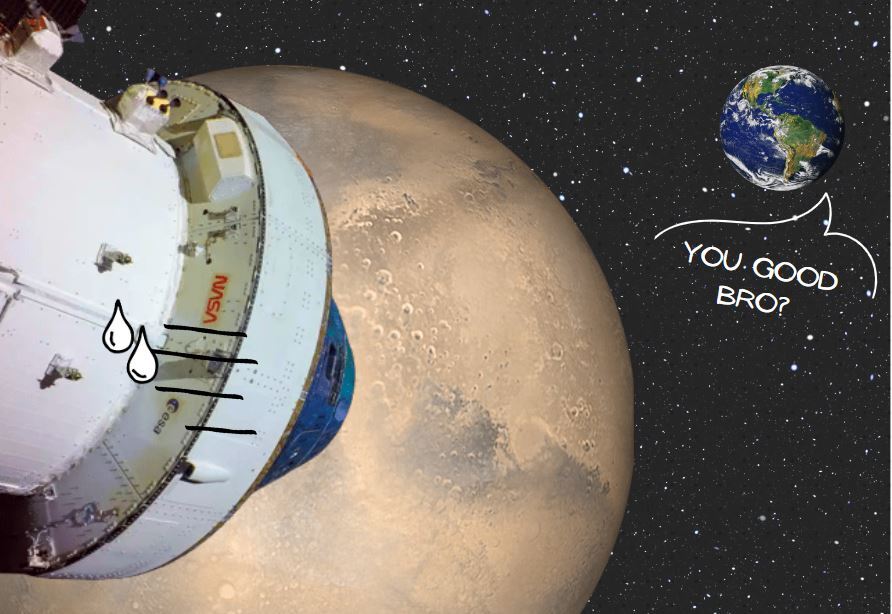
Artemis I: Updates since the launch
By Zarwareen Khan, December 19 2022—
Despite how Artemis I has been delayed a number of times this past year, the spacecraft, Orion, is finally on its way to the moon. Artemis I is the first step in NASA’s Artemis programme and involves a test flight which will go beyond the moon with no crew members aboard. Further future missions include Artemis II, which involves a lunar flyby with crew members aboard, and Artemis III, which will have the additional step of taking astronauts to the surface of the moon to investigate ice water at the south pole. Although NASA has been to the moon before, the difference this time is that the Artemis project is truly for the purpose of space exploration, as opposed to previous political motives, such as beating the Soviet Union in the space race. NASA has stated that they hope to “land the first woman and first person of colour on the Moon” as well and go beyond the expectations of the past.
Orion successfully launched from the Kennedy Space Center on November 22, and was “exceeding performance expectations” stated Mike Sarafin, the Artemis I mission manager. On flight day five, Orion entered the moon’s sphere of influence in order to prepare for the outbound lunar flyby. Within six days of the launch, the Orion capsule had gone by the moon and was within 127 kilometres of its surface — its closest approach yet. By day eight, it exited the lunar sphere of influence and on day 10, it entered the distant retrograde orbit, moving farther away from the moon’s surface. The distant retrograde orbit refers to the state of the spacecraft, in which it travelled at a high altitude from the moon in the opposite direction that the moon travels around Earth. As Orion continued on its journey, on day 13, it had travelled 268,563 miles from the earth, the farthest distance it will travel during Artemis I. After this point, it began its return to earth, where it exited the distant retrograde orbit on day 16 and re-entered the lunar sphere of influence on day 18. Presently, on day 19, it is now preparing for a return lunar flyby, and then it is expected to continue in transit on its way back to Earth, where it will ultimately re-enter Earth’s atmosphere on December 11.
Artemis I not only involves testing for Orion’s flight pathway, but also for what will be on board the spacecraft in future missions, such as astronauts. This has been done by adding mannequin astronauts — Commander Moonikin Campos, Helga and Zohar — who will have attached sensors to their spacesuits in order to test for cosmic radiation. The mannequins have been made in materials that resemble the human body to allow for better testing for the effects of radiation. Zohar will wear a radiation protection vest to determine its effectiveness.
Thus far, regardless of setbacks in the past, Artemis I has been successful in its flight pathway and has beaten the previous record set by Apollo 13 by travelling 64,373 kilometres beyond the moon. If Orion lands successfully during its return to Earth, it has the opportunity to increase space exploration for the future and redefine what such expeditions mean.
